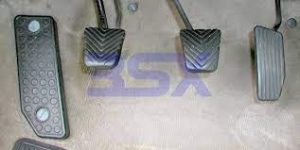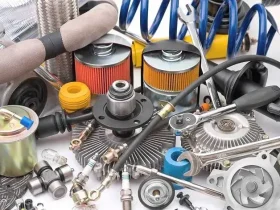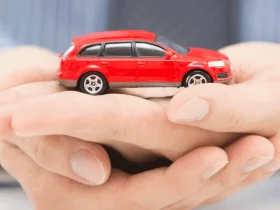There are many terms and phrases that may confuse the average driver. One such term is the “dead pedal.” While it may sound morbid, a dead pedal is actually a valuable component in a vehicle’s interior.
Whether you are a seasoned car enthusiast or simply looking to expand your automotive knowledge,
The Purpose and Benefits of a Dead Pedal
Put simply, a dead pedal is a footrest located to the left of the vehicle’s clutch pedal (or brake pedal in automatic transmissions) that allows the driver to comfortably rest their left foot while driving.
Why is this important? Well, driving can be taxing on your body, especially during long journeys or in stop-and-go traffic. The dead pedal provides support and stability for your left foot, which can reduce fatigue and improve your overall driving comfort.
Different Types of Dead Pedals
Now that we understand the importance of a dead pedal, let’s delve into the different types that are available in the market. While the concept of a dead pedal remains the same, manufacturers have introduced various designs to cater to different driver preferences.
1. Fixed Dead Pedals:
These are the most common type found in vehicles. Fixed dead pedals are non-adjustable and are usually made of the same material as the floorboard. They provide a stable platform for the left foot to rest on, ensuring comfort and reducing fatigue.
2. Adjustable Dead Pedals:
As the name suggests, adjustable dead pedals offer the flexibility to customize the position and angle according to the driver’s preference. These pedals usually have a height adjustment feature, allowing for a more personalized driving experience.
3. Performance Dead Pedals:
Designed with racing and spirited driving in mind, performance dead pedals often feature a more aggressive and sporty design. They are usually made from lightweight materials such as aluminum or carbon fiber to minimize added weight.
Installation and Placement of a Dead Pedal
Once you’ve made the decision to add a dead pedal to your vehicle, it’s important to understand how to properly install and position it for maximum comfort and functionality.
The installation process will vary depending on the type of dead pedal you choose. Fixed dead pedals are typically easy to install as they often come as a direct replacement for the factory-installed pedal.
Adjustable dead pedals may require a bit more time and effort during installation. They often come with mounting brackets or adjustable screws to allow for customization.
When it comes to placement, the dead pedal should be positioned in a way that allows your left foot to rest comfortably without interfering with the operation of the other pedals.
The dead pedal should be at a height that aligns with your seated position and allows your leg to maintain a comfortable angle. Improper placement can lead to discomfort and even strain on your leg during long drives.
Safety Considerations for Using a Dead Pedal
While a dead pedal can greatly enhance the comfort and ergonomics of your driving experience, it’s important to consider the potential safety implications. Here are some key safety considerations to keep in mind when using a dead pedal:
1. Familiarize yourself with the positioning:
Before you start driving with a dead pedal, make sure you have spent enough time adjusting and positioning it to your liking. Always ensure that your foot can easily transition from the dead pedal to the clutch, brake, and accelerator pedals without any obstruction or delays.
2. Don’t compromise on footwork:
Be mindful of maintaining proper footwork while using the dead pedal. Avoid resting your foot on the dead pedal unnecessarily, as this can result in delayed response times during emergency situations. Always keep your left foot hovering above the dead pedal when it is not actively being used.
3. Stay focused on the road:
It’s crucial to maintain focus on the road at all times while driving. Avoid getting too comfortable with your left foot resting on the dead pedal for extended periods, as this can distract you from the task at hand. Always prioritize safety and attentiveness while on the road.
4. Avoid unnecessary leg strain:
Although the dead pedal is designed to provide comfort, it’s important to listen to your body. If you experience any discomfort or leg strain while using the dead pedal, consider adjusting its position or angle to alleviate any tension. Putting excessive strain on your leg can affect your ability to drive safely.
Maintenance and Cleaning of a Dead Pedal
Now that you understand the safety considerations of using a dead pedal, let’s delve into the importance of proper maintenance and cleaning. Like any other component in your vehicle, the dead pedal also requires regular care to ensure longevity and functionality.
To keep your dead pedal in optimal condition, it is recommended to follow these maintenance tips:
1. Regular inspection:
Regularly inspect the dead pedal for any signs of wear and tear. Check for loose screws, cracks, or any other damage that may compromise its stability. If you notice any issues, address them promptly to avoid further damage.
2. Clean regularly:
Similar to the other pedals in your vehicle, the dead pedal can accumulate dirt, dust, and grime over time. Use a soft cloth or sponge dipped in mild soap and water to gently clean the surface of the dead pedal. Avoid using harsh chemicals or abrasive materials that can scratch or damage the surface.
3. Dry thoroughly:
After cleaning, make sure to dry the dead pedal thoroughly. Moisture can lead to rust or corrosion, which can affect the functionality of the pedal. Use a clean, dry cloth to wipe away any excess water or moisture.
4. Lubricate if necessary:
If you notice any squeaking or sticking of the dead pedal, applying a small amount of lubricant can help resolve the issue. Be sure to use a lubricant specifically designed for automotive use and follow the manufacturer’s instructions carefully.
Conclusion
Taking care of your dead pedal is just as important as taking care of other components in your vehicle. Regular maintenance and cleaning will not only ensure its longevity but also contribute to the overall safety and comfort of your driving experience.









